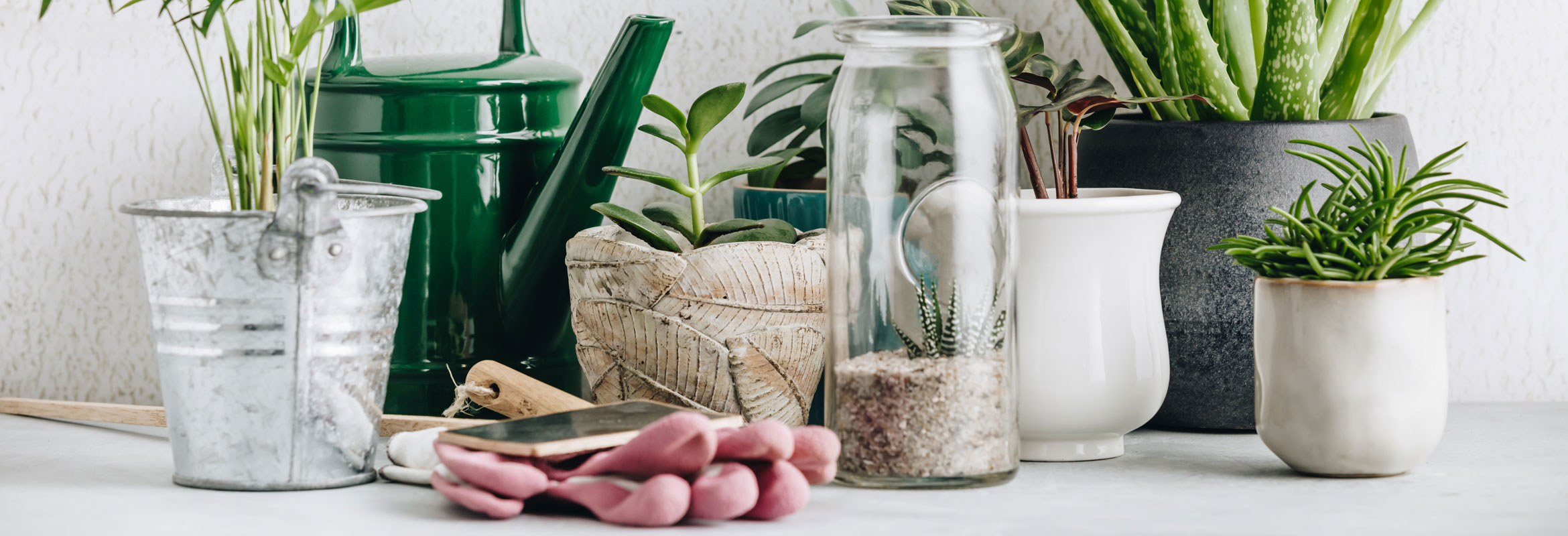
Plant Help
With a little care we can extend the life of our plants with the right environment, paying attention to changes and acting on signs of pests and sickness… not much different than what we would do for ourselves.
General plant problems
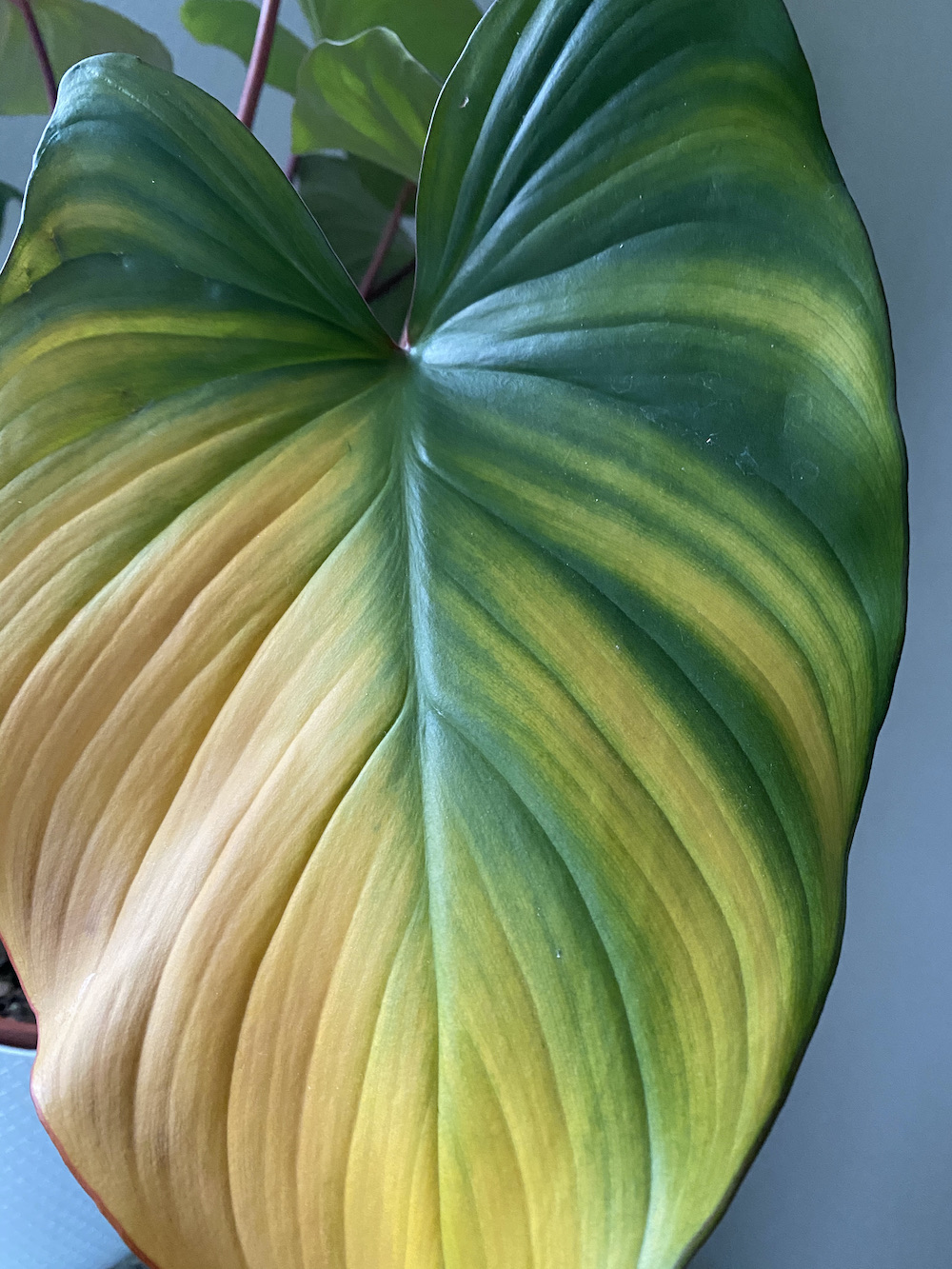
Excessive Yellowing leaves
Chlorosis may be caused by overly dry soil which causes nutrient deficiency or overwatering, soggy soil or sitting in water for too long which may lead to root rot.
If in the case of dry crusty soil, aerate the soil using a chopstick and place the plant in a water tray to absorb water until the soil is fully saturated, allow to drain before placing back into the decorative pot.
If the soil is too soggy, take the plant out of the decorative pot and place the plant in a brighter area so the plant uses up excess water quickly or consider replacing the soil and check for root-rot.
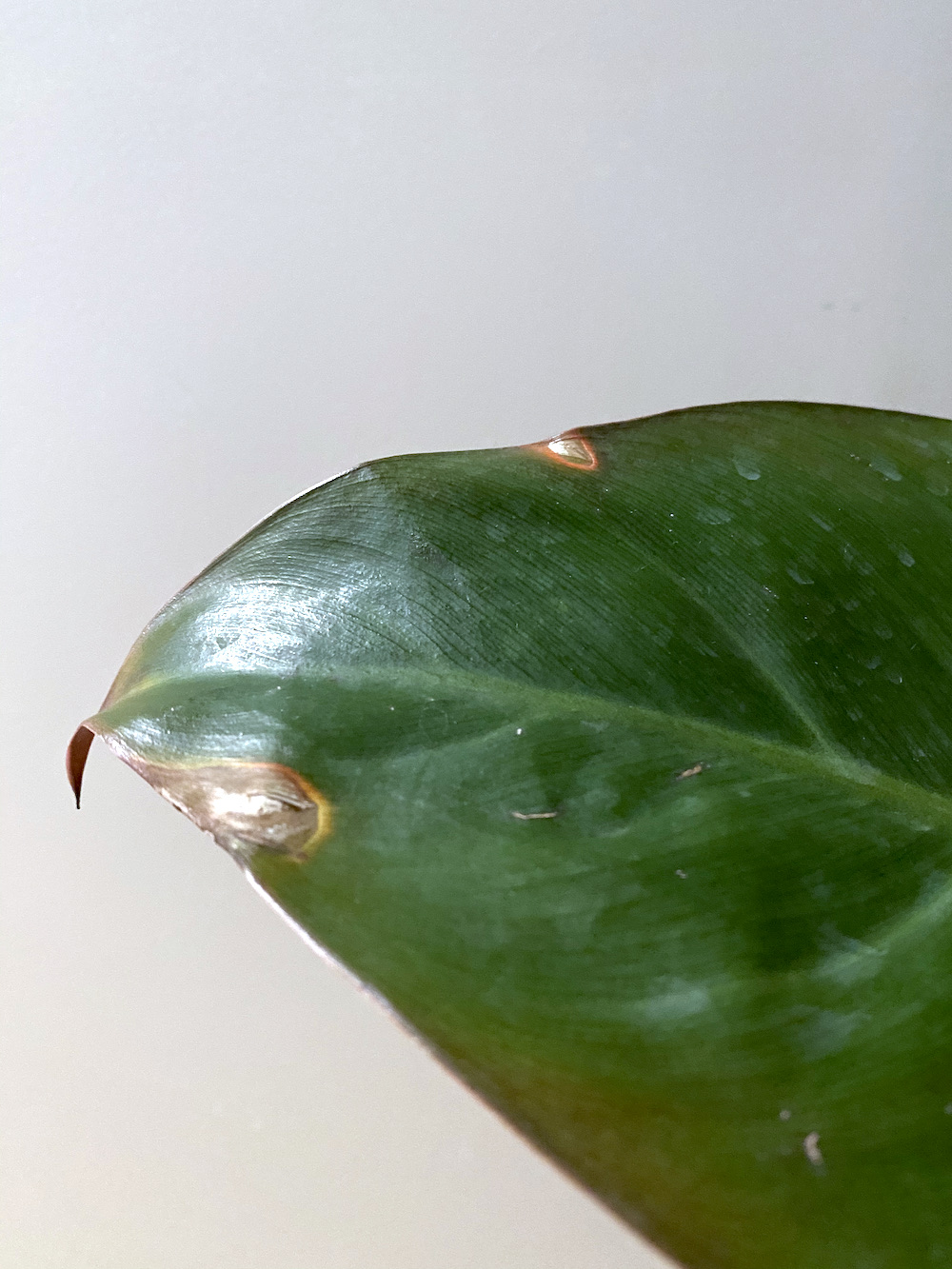
Brown tips and edges
Most likely to be low humidity, inconsistent watering and often if the soil is too dry.
Water the same number of days apart, drench the soil until the water runs out of the bottom of the pot, let it drain before placing back in a decorative outer pot.
Raise the humidity by humidifier or placing onto a pebble-tray and if using floor heating, place the pot off the ground.
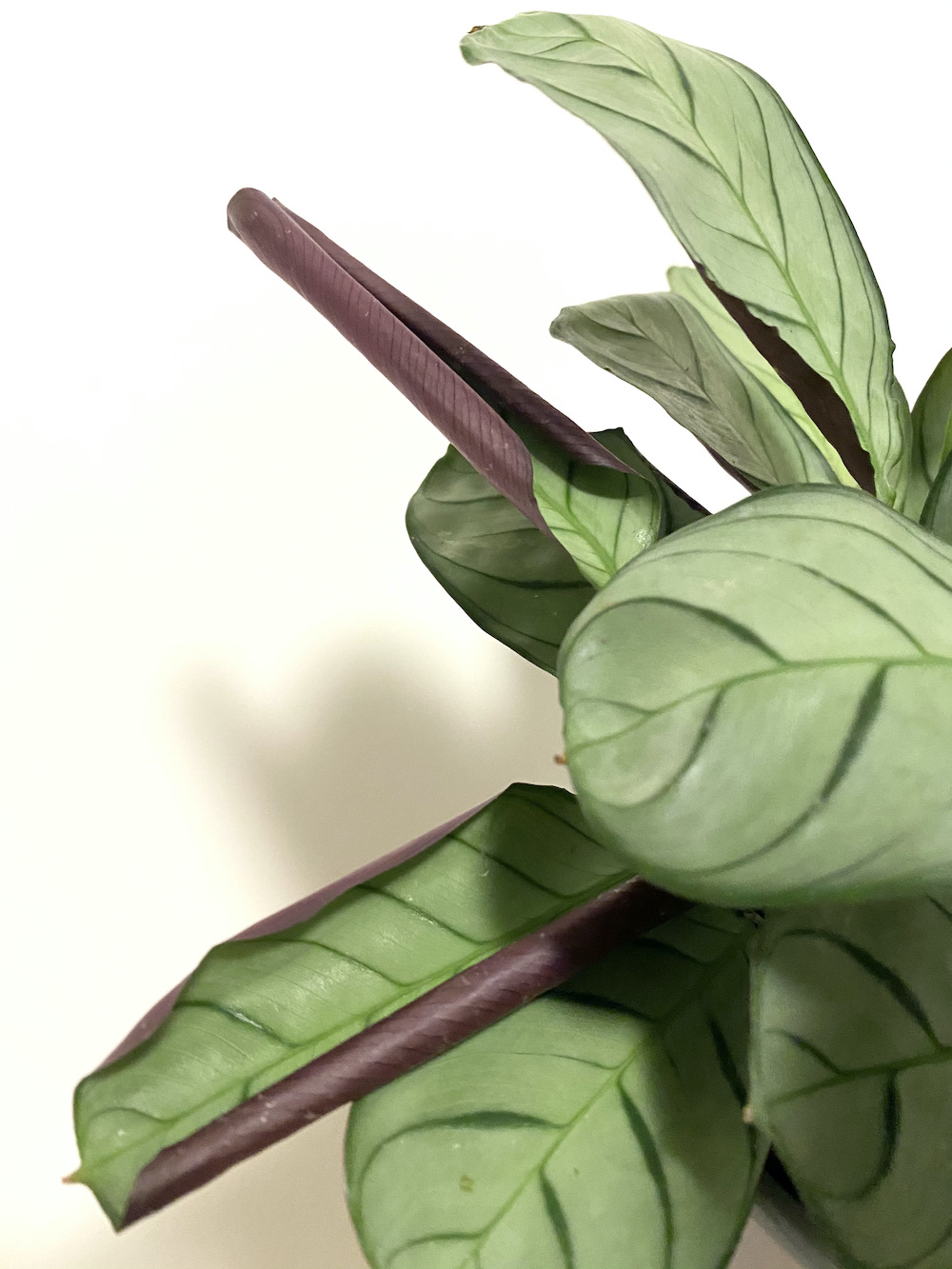
Curling leaves
Too much or too little light, change its environment and possibly feed the plant.
If the leaves are also mottled or spotty, with vein-like damage, check for mold, thrips or spider-mite infestation, and if pests are found, shower and spray down with green soap and water mix every 8-10 days for 3 weeks and quarantine during this period.
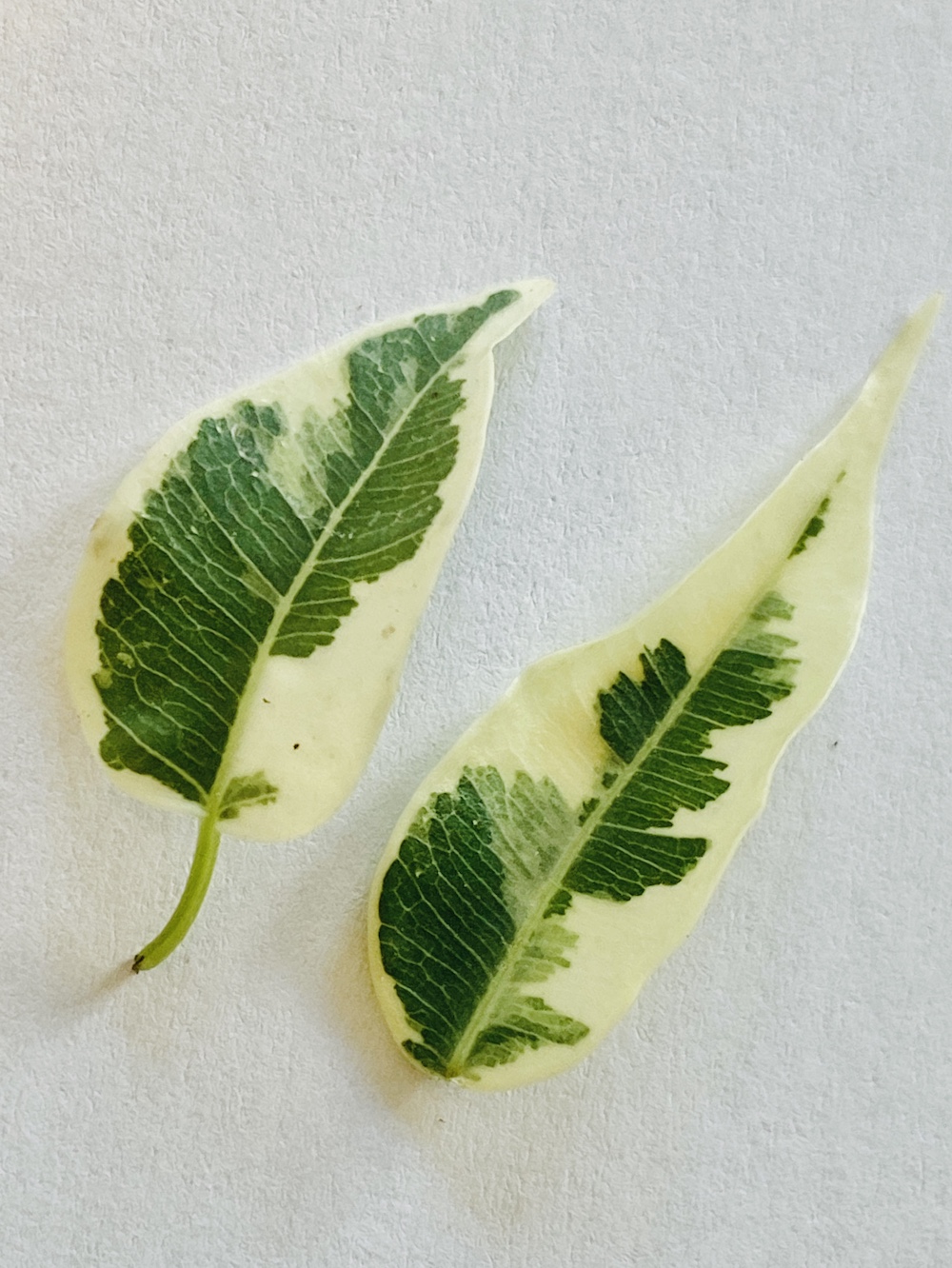
Dropping leaves
If the plant is dropping green leaves, and there are no visible pests, this could be caused by a number of various conditions, where environment shock is one of the most common causes.
Standing in a draught, cold or too hot an area, insufficient light, lack of humidity, or soil is too dry or too wet. Control and change the plant’s environment and watering schedule.
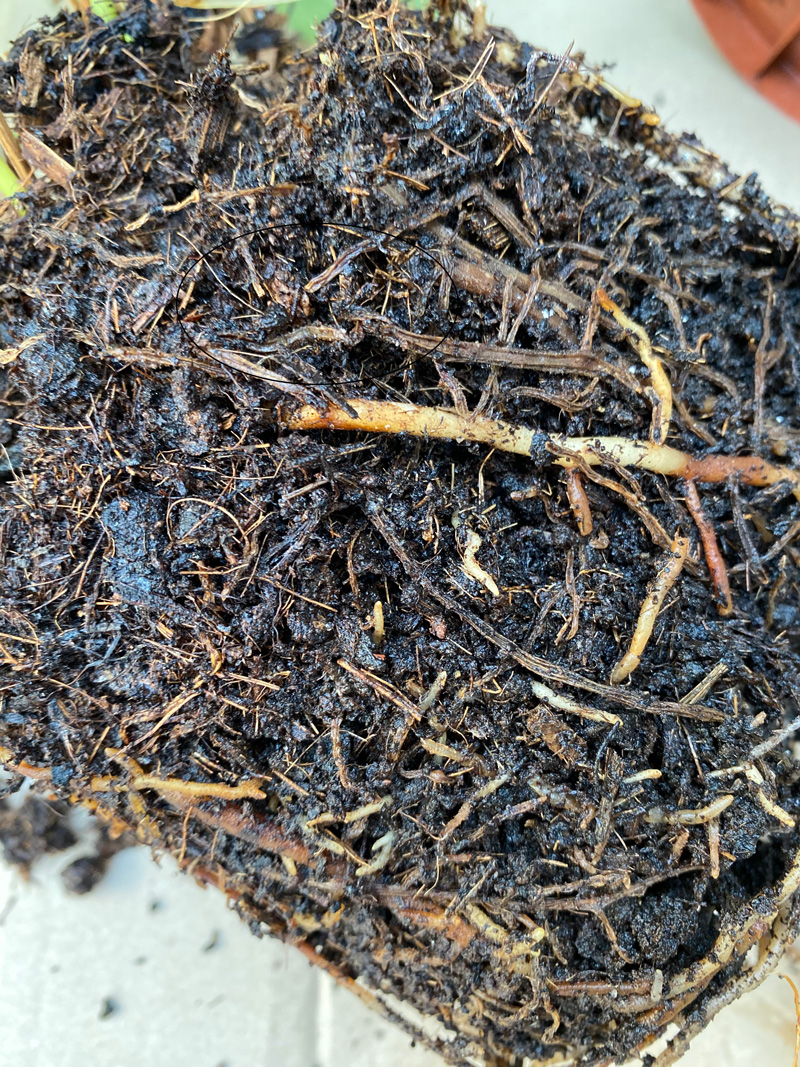
Root-Rot
This is caused by overwatering and soggy soil where the roots do not get enough oxygen and drown and stop delivering water and nutrients to the plant.
The root’s outer layer (sheath) is black and pulls off easily. Wash off all the soil, cut off the infected roots with sterilized scissors, spray with Hydrogen peroxide and repot in new soil mix.
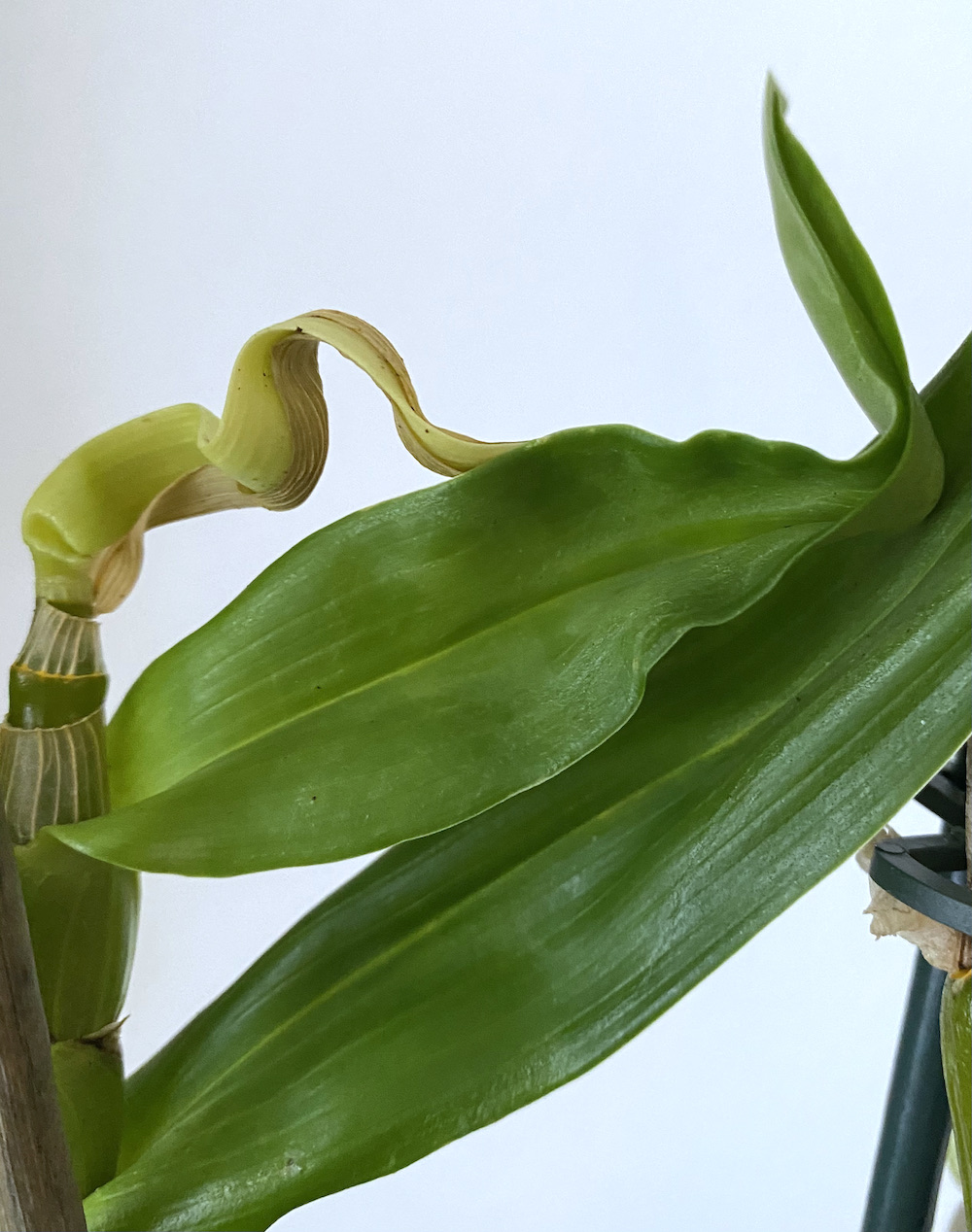
Distorted leaves
Sometimes leaves will be distorted for a while with a change if environment.
It could also mean pests and if so, shower the leaves (top and underneath) with room temperature water for 5-7 minutes, allow to dry then spray the leaves with the solution of green liquid soap and water, or one of your choice.
Repeat every 3 days for 2 weeks. Isolate from other plants and check all plants. If there are signs of mold, remove infected leaves and spray with hydrogen peroxide solution and ensure there is free airflow around the plant.
Advisable to also check the root system for root-rot and repot in new soil if necessary.
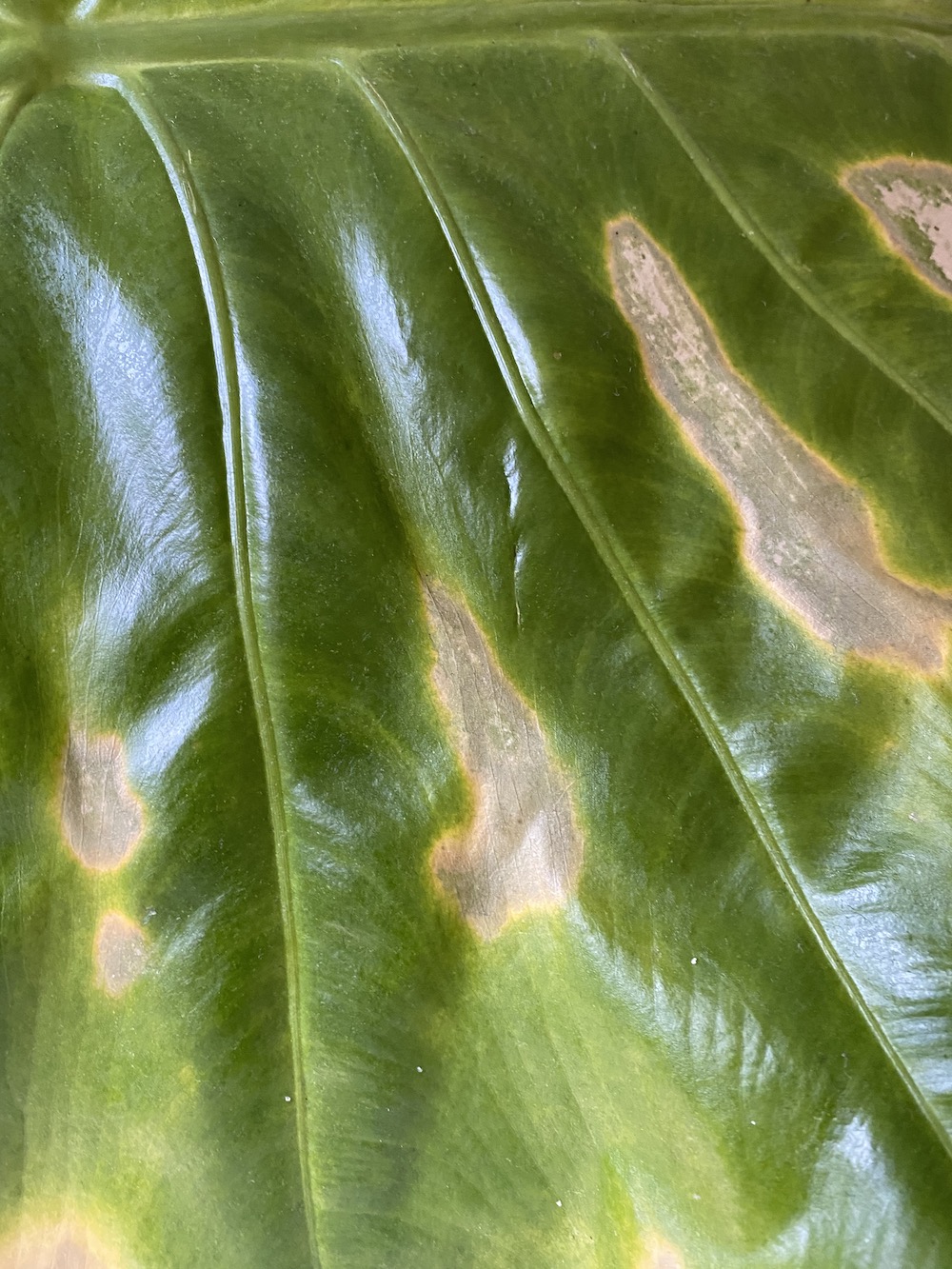
Burnt or pale leaves
Sun burnt leaves is when the leaves receive too much direct sunrays and the cells burn and die.
Put the plant in a shadier place. With pale leaves, is often that the plant has received too much light or not enough to produce the correct amount of chlorophyll.
Move the plant to a shadier or sunnier place. Replace half the soil if no changes are seen in 2-3 weeks, add 2g Epsom salt to 1lt filtered water or add magnesium, however not all plants benefit from additional magnesium.
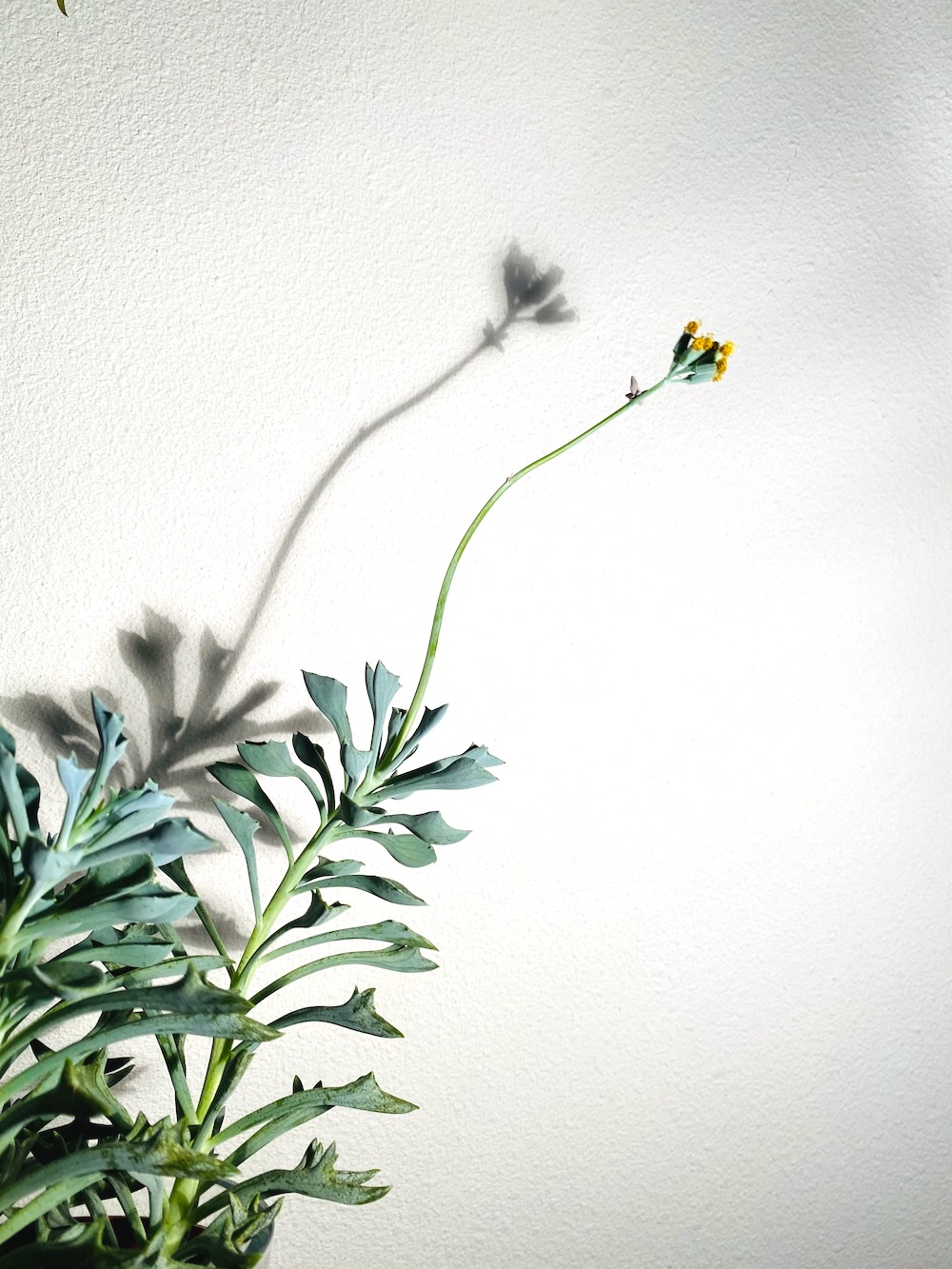
Plant stretching
Means your plant is growing too quickly towards the light and needing more light, bring it closer to filtered light source but not direct sunlight.
This is common for succulents and cactus type plants.
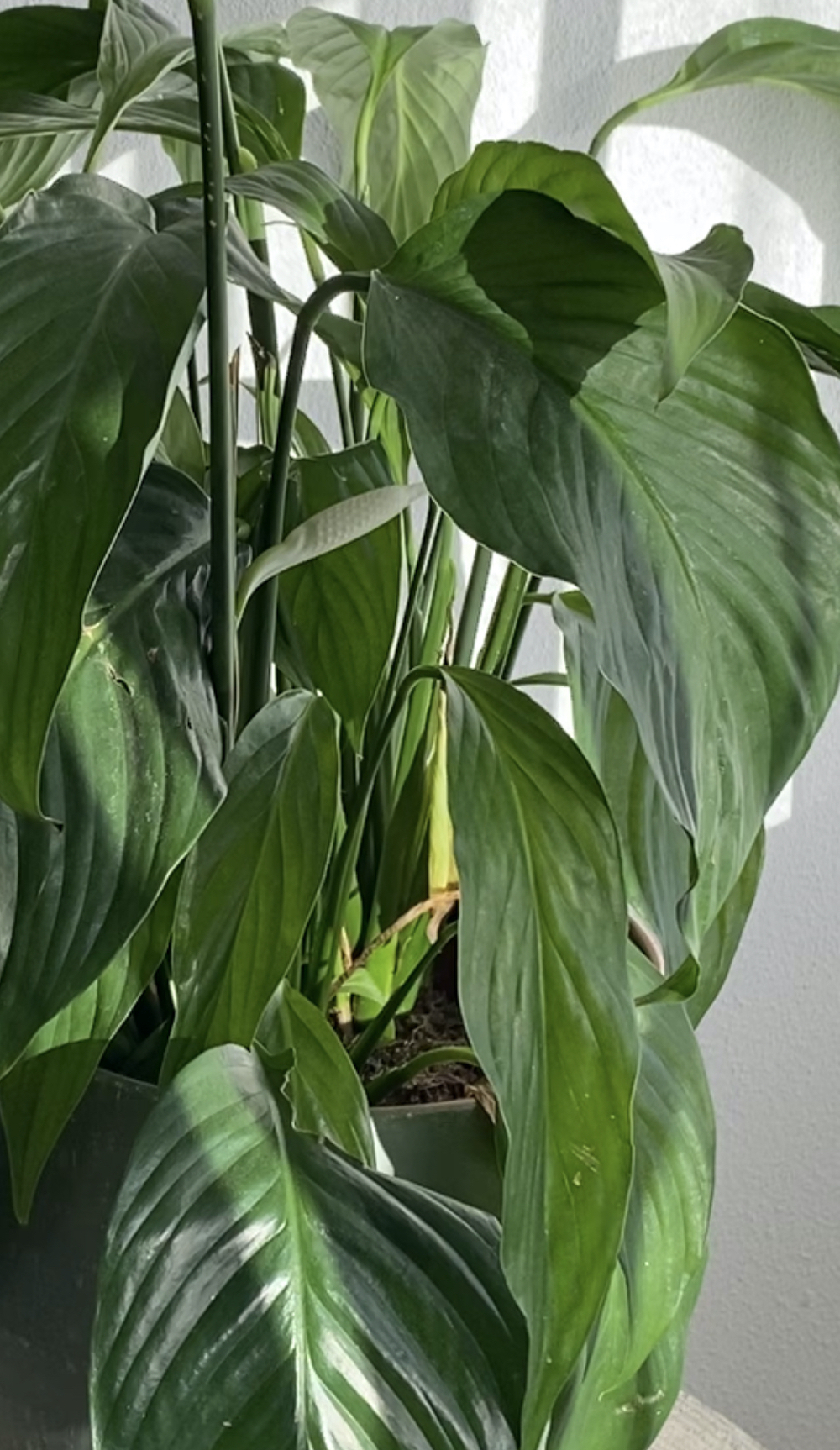
Wilting, dehydrated leaves
Check the soil. If the soil is too dry then possibly underwatering, drench the soil by standing the pot in a water tray till soil is saturated, allow to drain before placing in the decorative pot.
It could also by overwatering and poor drainage where the soil is too soggy and the roots are not getting enough oxygen and root rot causes lack of nutrients to the leaves.
Move the plant to a brighter area so the plant can absorb the moisture quicker. If this does not change in a few days, consider washing off all soil from the roots, check for root rot and cut off all black roots and repot in clean potting soil.

Large brown dead spots
On the leaves could be a result of sunburn, cold water or draughts, place your plant out of the direct sun, water in the mornings with room temperature filtered water and place your plant in a place free of draughts.
You can cut off the dead part of the leaf but not into the healthy areas.
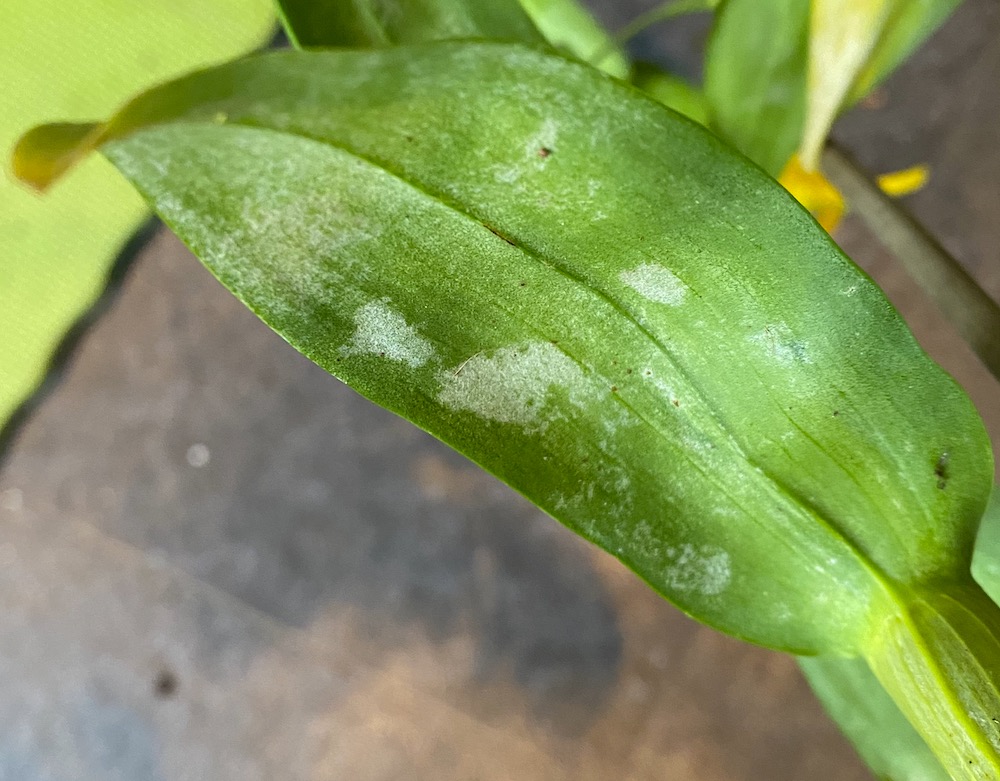
Spotted mottled leaves
First check for pests and control. If bacterial or fungal disease; cut off all diseased leaves and dispose of immediately and replace the potting soil, spray down entire plant with Hydrogen peroxide and water.
Water from bottom using a water-tray, and ensure the plant has enough fresh (not cold) air flow around it and does not remain damp (ie: bathroom plants).
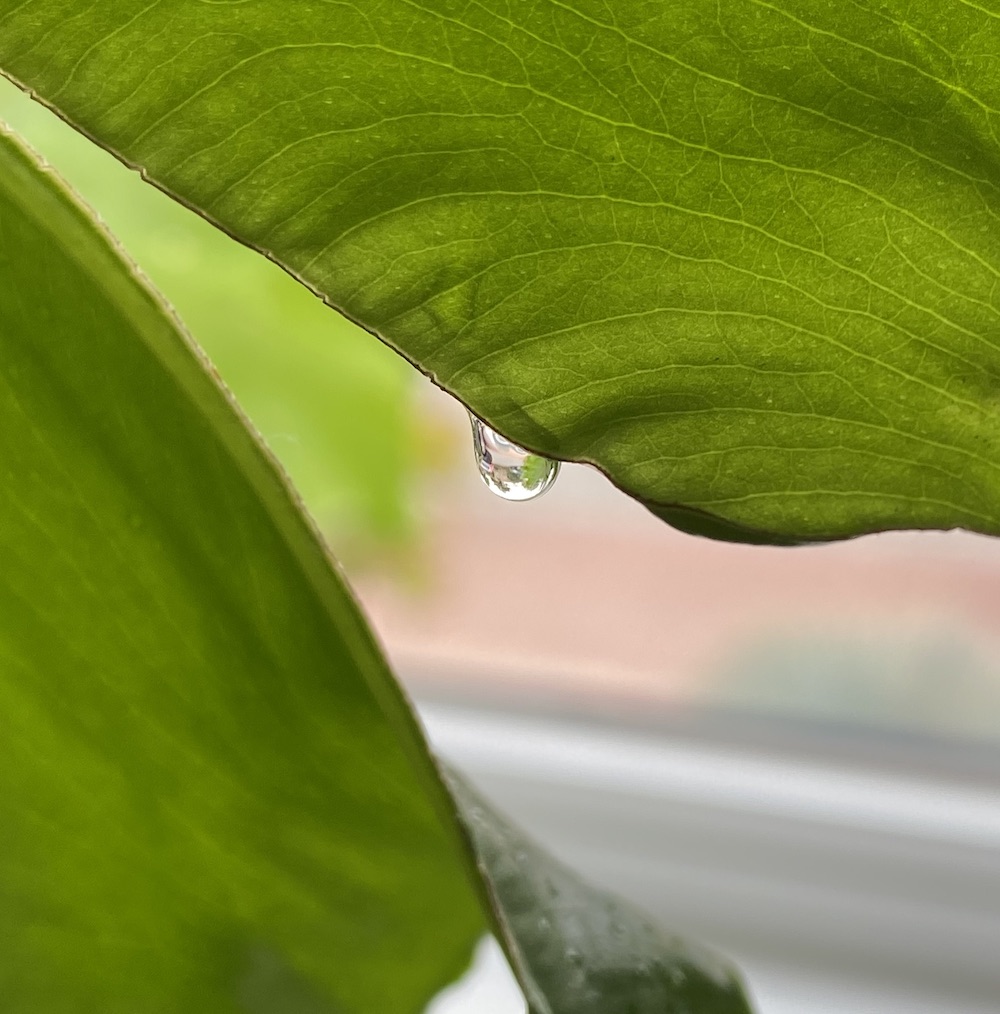
Guttation, Water drops on leaf tips
Sap-like water drops that form at the point or edges of the leaves, usually at nighttime, and is called guttation. This is the plants natural transpiration process of excess water by pushing it out through tiny holes in the leaves called stomata. Check soil moisture and humidity levels.
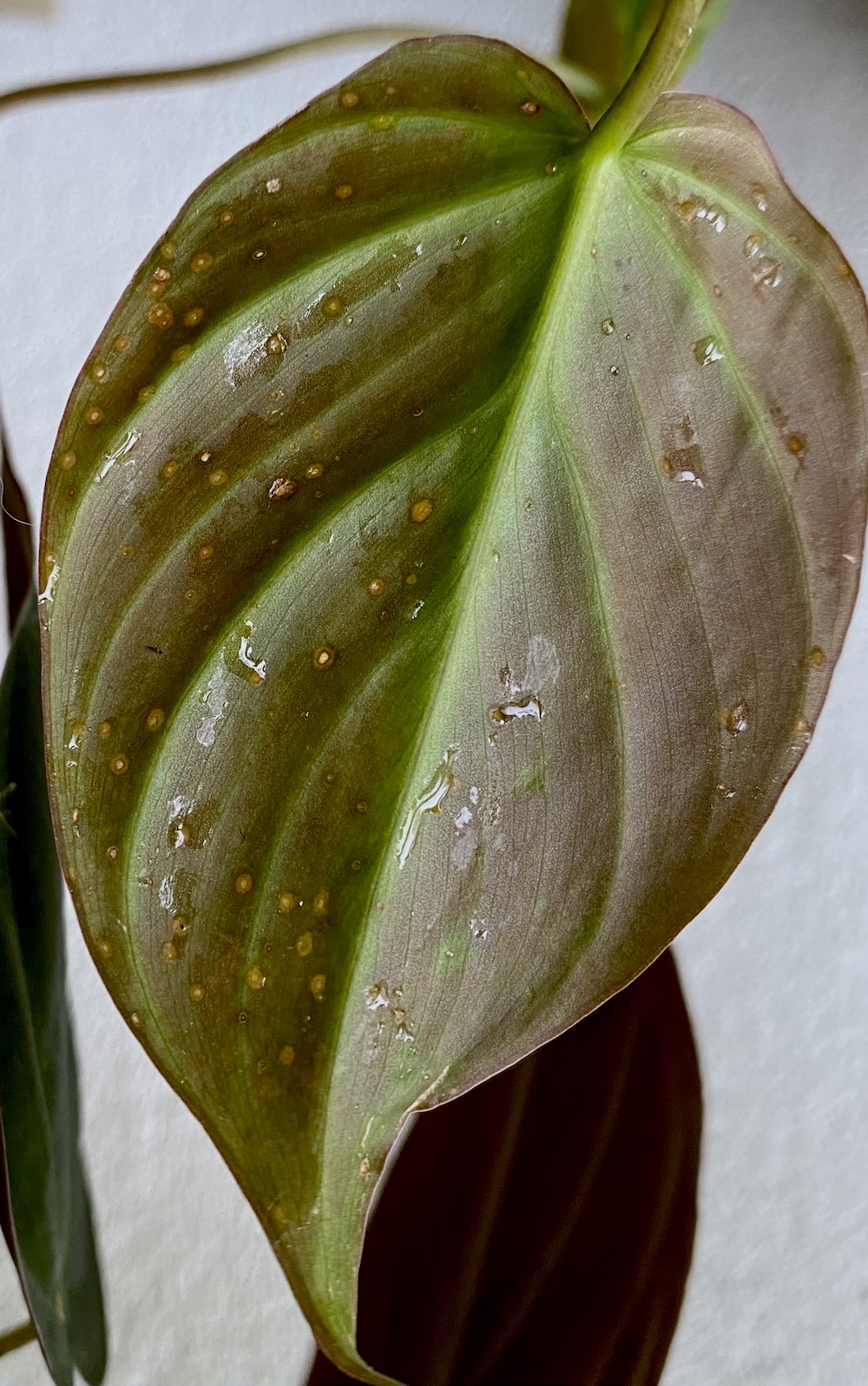
Transpiration
or wet underneath the leaves caused by excess water pushed through the pores or stoma or stomata.
These are pores excret excess water normally used for exchanging gases and although normal, if in excess, may burst the cells and damage the leaf. Check for overwatering.
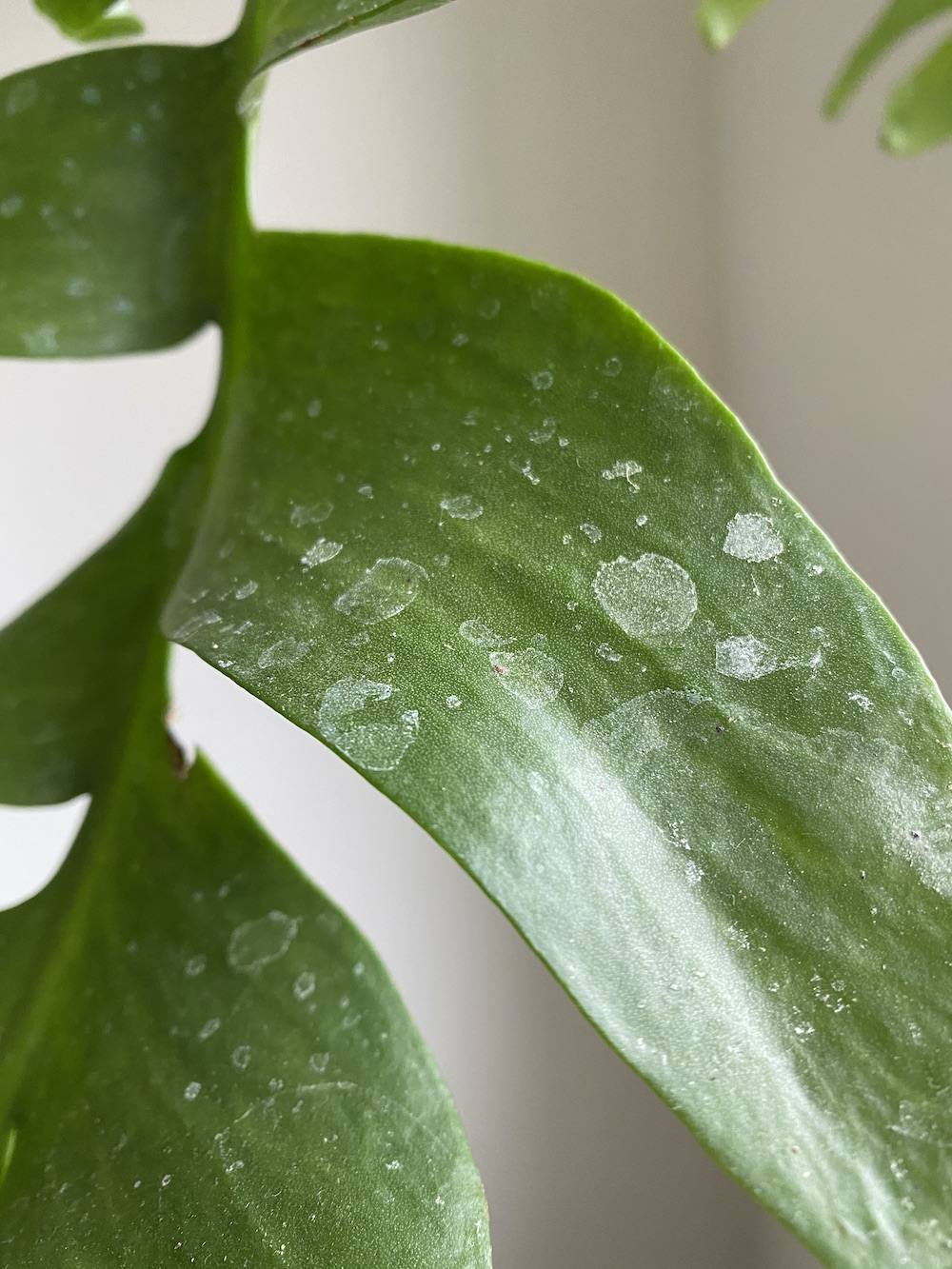
White crusty leaves and soil
This is caused by minerals, salts and calcium in unfiltered tap water and can stunt the growth of your plant.
Scrape off the top 2cm of soil and on the edge of the container, replace the topsoil with new soil, water the plant thoroughly with filtered water until the water runs through the bottom of the inner pot, allow to drain before placing back into the decorative pot. Flush out the soil now and again but remember to fertilise monthly.
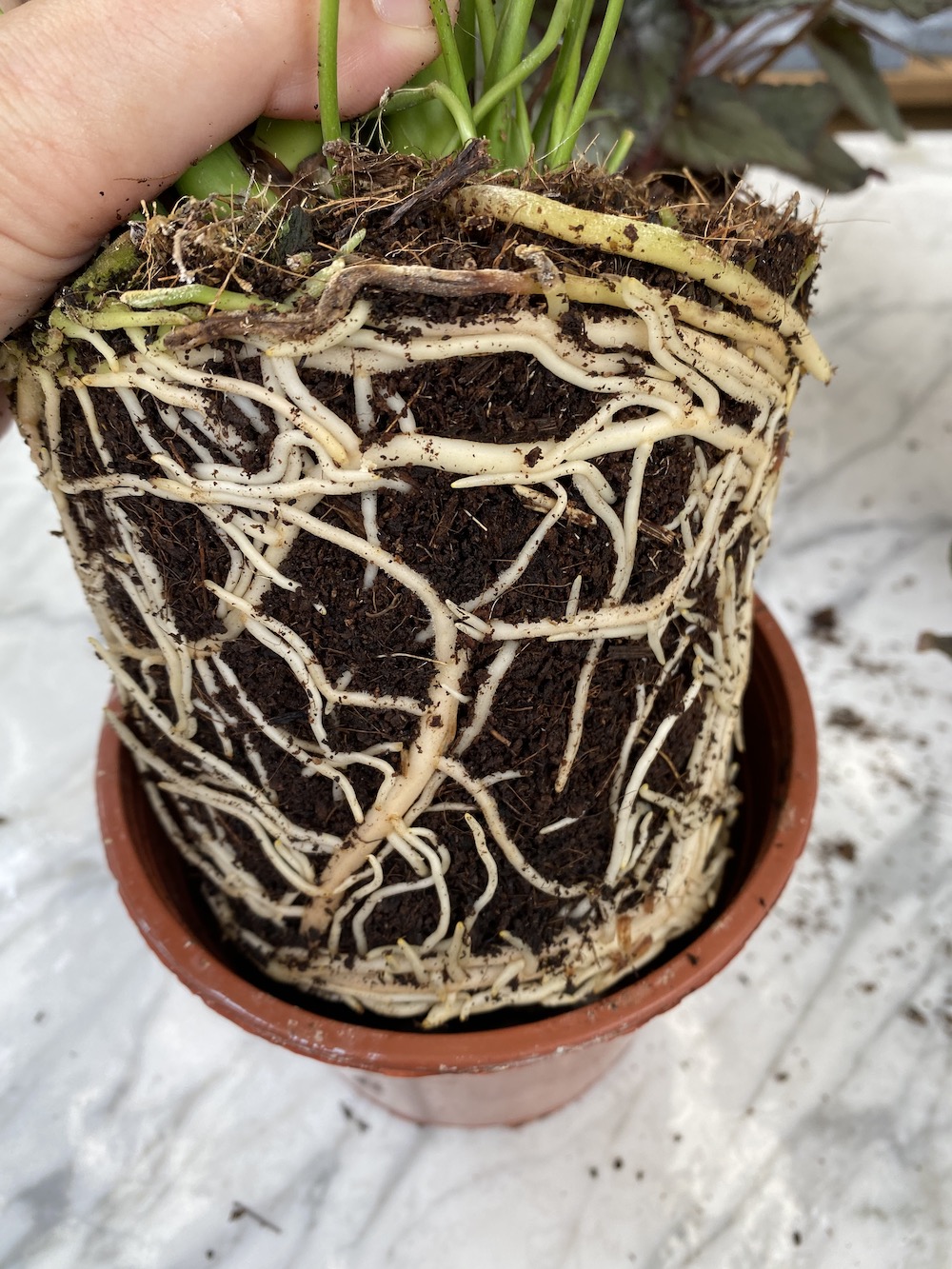
Pot-bound roots
Some plants do prefer being a little pot-bound so first find out before replanting, but if it has more root than soil, then loosen the roots, cut off damaged, dead or black roots and upgrade to only one pot size larger and use the correct soil mixture for the plant type.
Bugs, pests and molds
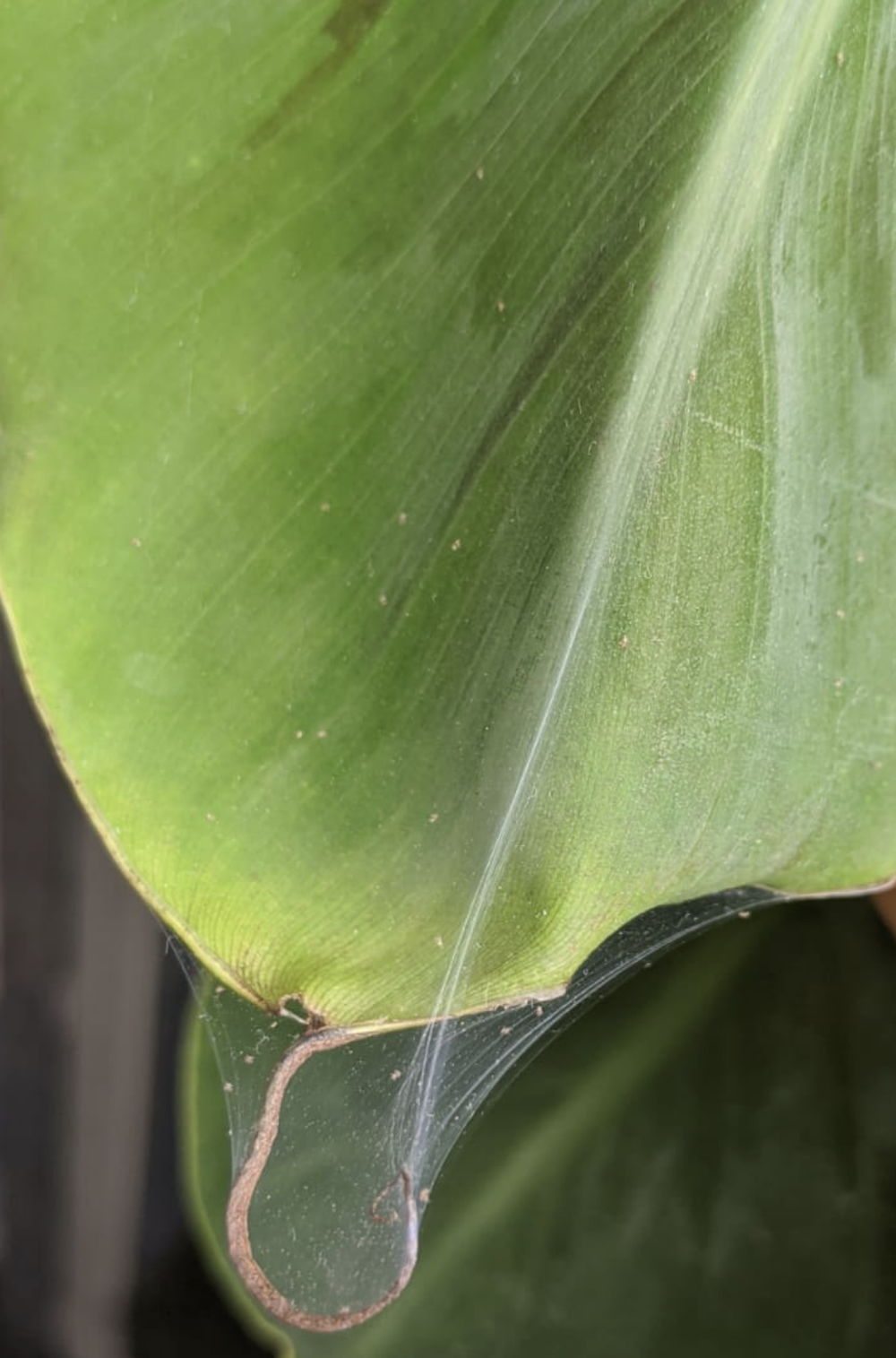
Spider mites
Full cycle from 10-20 days. These stubborn, minute arachnids like warm dry leaves to breed on, feed from the sap and can kill an entire plant if left untreated. This small 6-legged spider can be seen by their fine yellow spots/eggs on the surface of leaves small fine webs in the curls and edges of the leaves.
To check, place a white sheet of paper under the leaves and tap the leaves, the tiny mites will fall onto the paper and start crawling.
Check all plants and isolate infected plants. Shower off the plant, top and under each leaf and spray with chemical or biological solution for arachnids and remove and replace top 10cm of soil as they can overwinter in the soil. Repeat every 4-5 days for 5-6 weeks. Or purchase predatory bugs or mites.

Thrips
Life cycle in summer 10-14 days, in cooler months may take 20-30 days depending on the environment.
These tiny slender insects, blackish or dark brown are challenging to get rid of and they can fly, crawl and jump to other plants. They suck out the sap of leaves, leaving blotchy streaks and distorted leaves, the young nymphs are clear or yellow and found on the surface of leaves or in crevices of leaves.
Spray off the leaves in the shower, allow to dry and spray leaves with chemical or biological solution for thrips every 5-7 days for at least 3-4 weeks. Adding insecticide to water when watering will allow the plant to absorb it into the plant itself. Or purchase predatory bugs or mites.
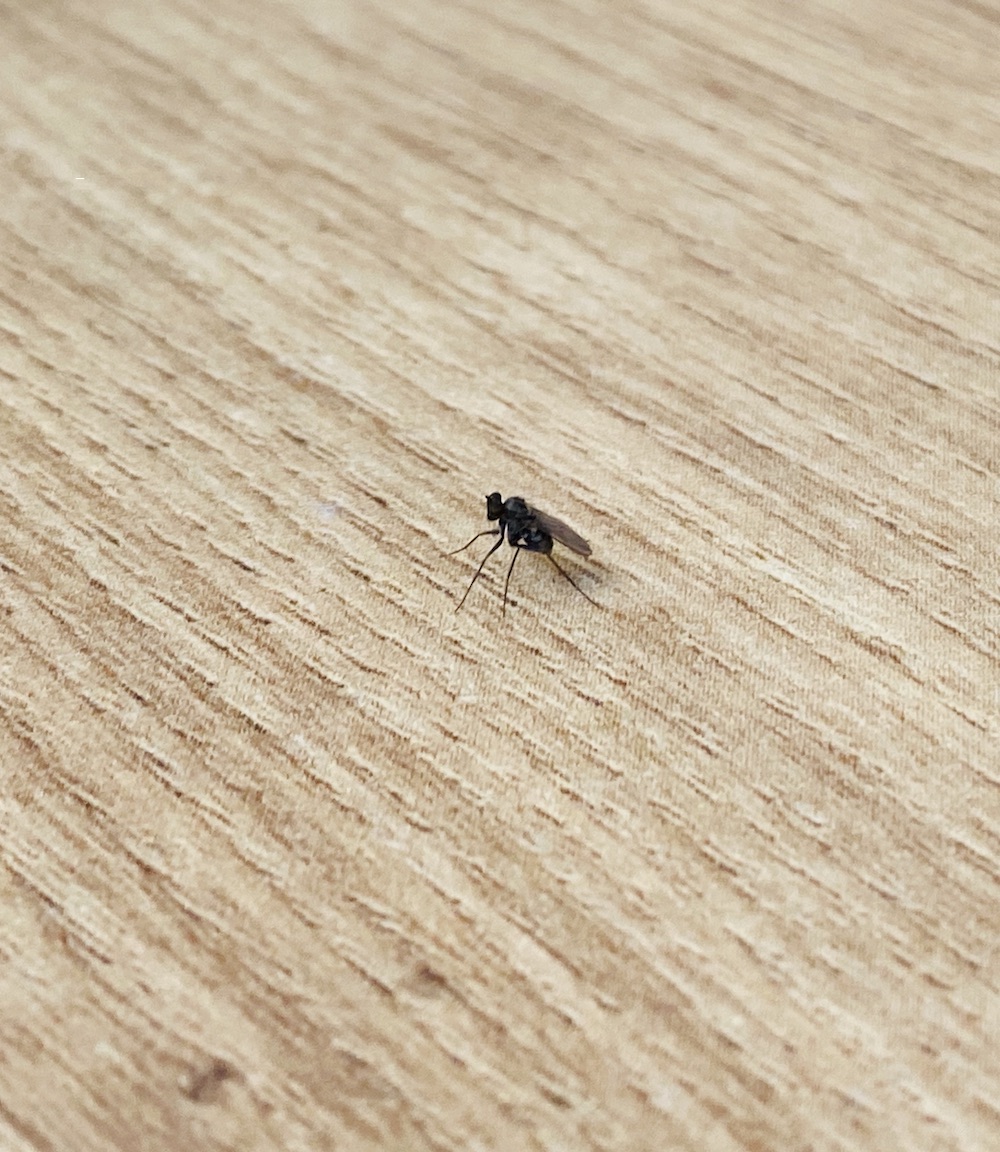
Fungus gnats / Sciarid flies
Life cycle 10-15 days. Each gnat can lay 200-300 eggs in moist soil where the larvae eat the roots and organic matter which result in weak plant and root rot.
Replace the top 10cm of soil with clean, dry, well-draining soil mixed with perlite and cover the top with 2 cm of course sand, small pebbles or food-grade diatomaceous soil then drench the soil with a mix of hydrogen peroxide and filtered water solution.
Use sticky traps close to the soil to trap the adults to break the breeding cycle. From here, only water using a water-tray to keep the soil surface dry. If you have excess gnats (Plague) consider purchasing Nematodes (microscopic worms) which are good for all unwanted Diptera insects that breed in the soil.

Mealybugs
White or yellowish fast crawling bugs that cover themselves with a white furry mass. They feed on plant sap and found often in the crevices of leaves.
Clean plants and containers and soil, taking off as many bugs as possible and spray with pyrethrin every 8-10 days. Taping with double-sided tape to the pot edge to prevent crawlers from infecting other plants.

Aphids (green, black or pale)
Suck out sap from leaves and plants. Shower plant (top and under leaves) with room-temperature water for 5-8 min.
Spray with mix of rubbing alcohol and insecticidal soap and water. Let leaves and plant dry, then repeat every third day for 2-4 weeks. Life cycle is complicated.
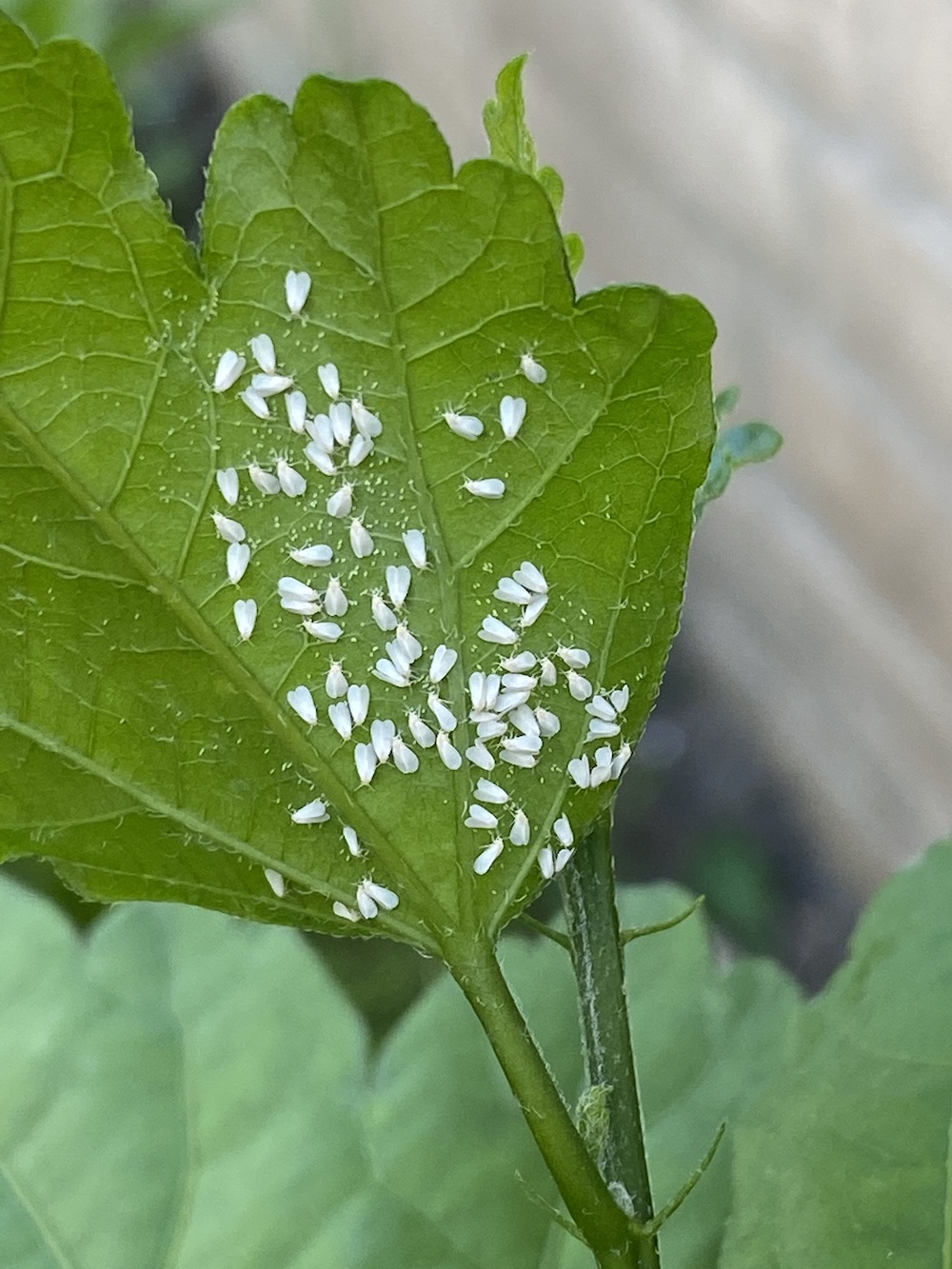
White flies
Small white flies that lay eggs and rest under the leaves and suck out the sap under the leaves.
Cut off infected leaves, destroy. Shower the plant and spray with neem oil mix with spirits or any horticultural oil every 5 days for 6 weeks. Life cycle is 2-3months.
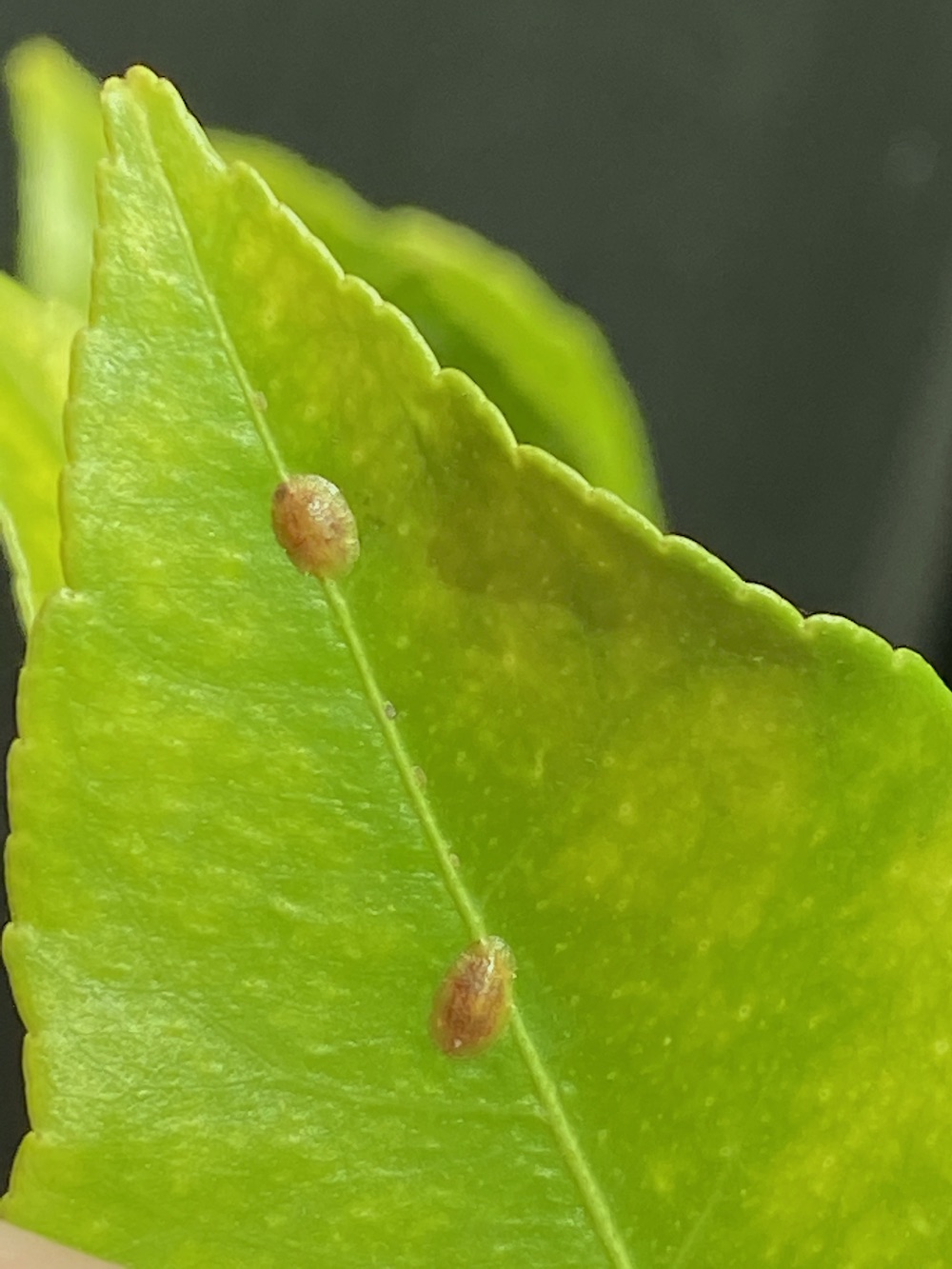
Scale insects
Small round insects with a hardish shell. Scrape off scales manually from the top and under the leaves and branches, cut off heavily infected foliage and branches.
Spray or dab with rubbing alcohol mixed with water and 2% green soap every 8-10 days and use double-sided tape on pots to prevent crawling to other plants.
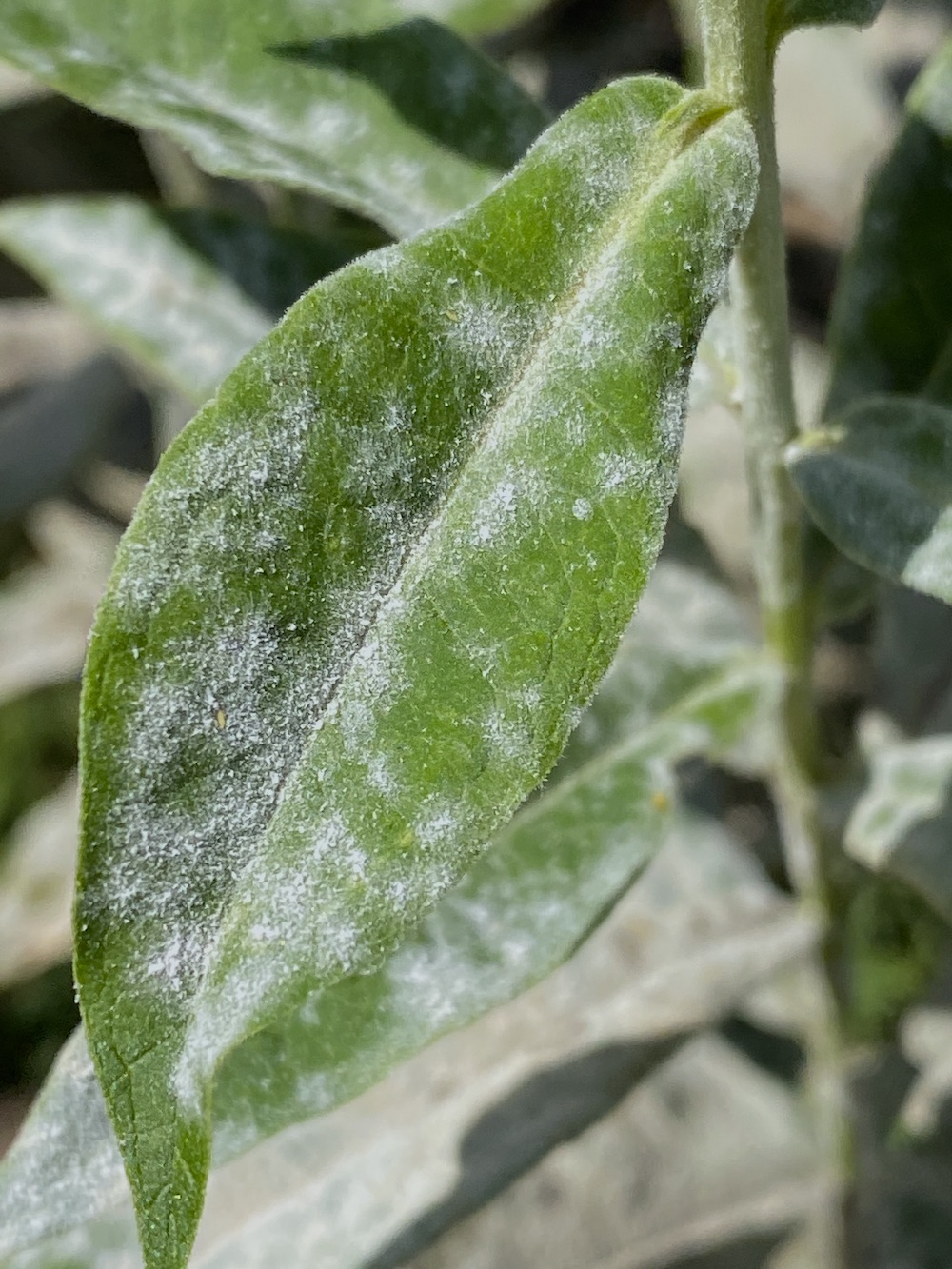
Powdery Mildew
This is a fungal infection and can be killed using fungicides.
Remove infected leaves, place in more open area for better airflow and water using water-tray. Do not mist.

Slugs / snails
Remove the snail/slug, check under the pot and lifting the plant out of the pot, checking inside the soil and pot for any small clusters of white eggs.
Shake off all soil, gently wash off all soil and repot using clean soil. To prevent infestation, place some coffee grounds or crushed eggshells around the plant or use a slug repellent as described.

Mushrooms
Mushrooms in your houseplants are harmless and not a threat to your plants, rather it means your soil is a happy and healthy mini ecosystem, although it could also be a sign of overwatering.
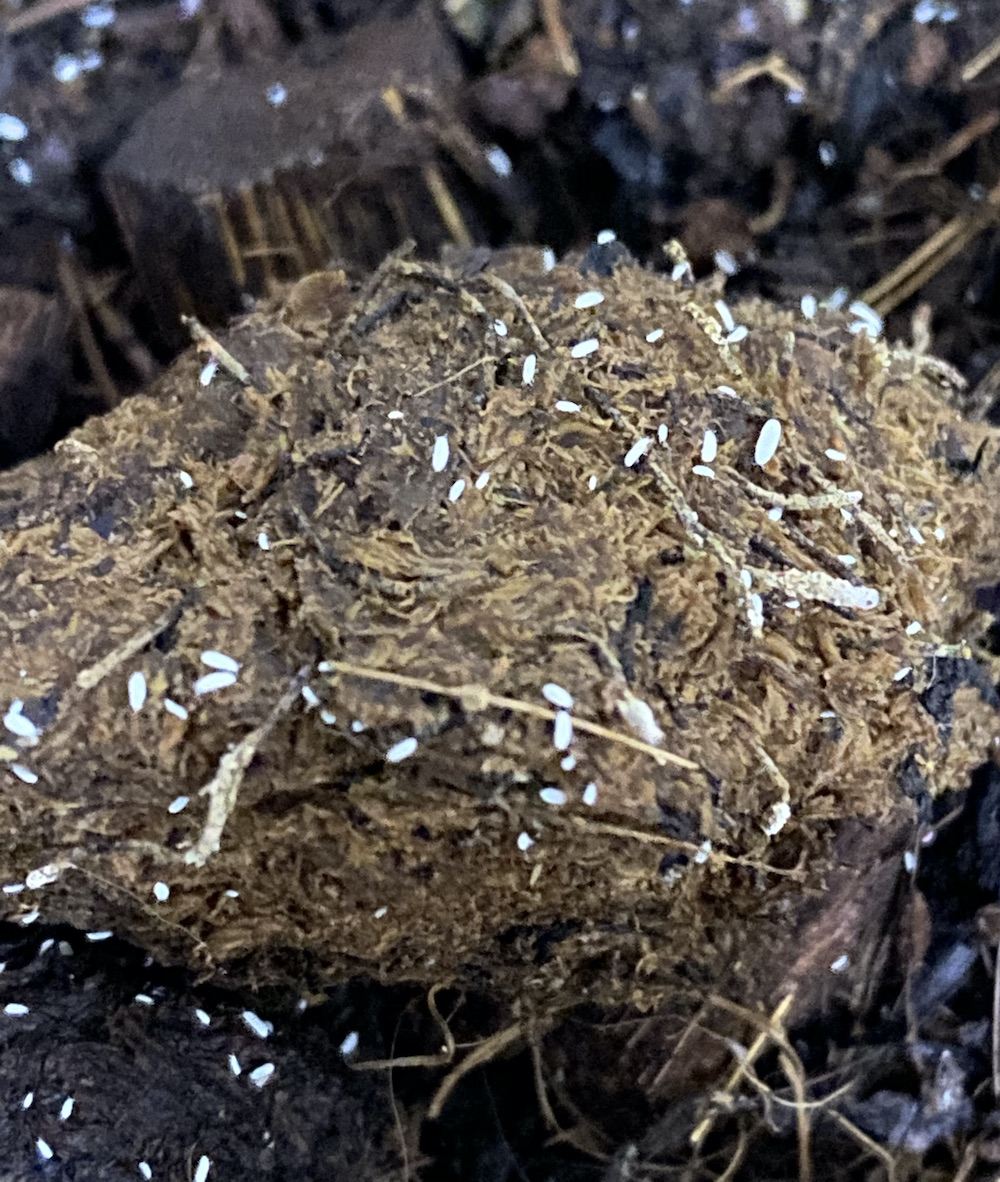
Compost mites
When you first see these minute white bugs in the soil, and there can be many of them, it can give you quite a scare, but these little bugs are harmless to you plant and only aid decomposition of organic matter in the soil.
They can move to the top or bottom of the soil after watering. If you are concerned with them, replace the soil.
Product aids and nutrients
AIDS
Insecticidal soap
Biological soap solution is the easiest and most used method of repelling unwanted pests and does not harm good bugs.
Sticky traps
Attracts and traps gnats, fruit flies, moths and whiteflies and breaks the breeding cycle
Neem Oil (Azadirachta indica) recommended solution mix used to combat adult pests on leaves and larvae in the soil. Care must be taken not to spray on walls and furniture.
Hydrogen peroxide 3%
1:4 ratio water for soil drenching and 1;2 for spraying mould control. For foliage spray use 25ml:1 cup water
Pyrethrin
A natural pesticide (found in chrysanthemums) and toxic to most bugs and larvae. Spray lightly the leaves and top of soil.
Methylated spirits or rubbing alcohol
Mix 250ml to 1lt with water, 3ml green soap in a spray bottle.
Mosquito-bits
Contains bacteria that destroys gnats and larvae by sprinkling on the surface before watering.
Predatory Lady bugs
Advisable to buy commercially sustainable ladybugs rather than Asian ladybugs that are harvested from the wild. Ladybug names: adalia bipunctata & coleomegilla mauculata. Asian ladybug (harmonia axyridis and Hippodamia convergens) should not be used in Europe. Shower your plant completely, place your plant in quarantine and release the ladybugs at night onto the plant. Release or store your lady bugs in a bug box in a cool dark place and feed them with raisins soaked in water. They live up to one year.
Predatory mites for spider mites
Orius Laevigatus (pirate bug), Phytosieulus persimilis, Phytoseiulus Persimilis, Amblyline cu, Anderline aa, Galendromus occidentails. These mites are carnivorous and will feed on the spider mites their, lavea and eggs then move off the plant or starve.
Predatory mites for thrips
Ladybug, green lacewing or Orius Laevigatus (pirate bug) that eat adults, lava and eggs.
Predatory Nematodes for fungus gnats
(microscopic worms) which are good for all unwanted Diptera insects that breed in soils. Not to be used with hydrogen peroxide.
ELEMENTS AND NUTRIENTS
Phosphorus
Helps build a strong root system and increase flower and fruit development.
Calcium
Deficiency causes leaves to distort, add bone meal as a source of phosphorus and calcium.
Nitrogen
Keeps leaves healthy and green and lack of this nutrient will result in yellow, wilting leaves from the older leaves upwards, add organic compost or coffee grounds in the soil.
Potassium
Deficiency will result in the oldest leaves getting yellow edges and the centres remain green and moving upwards. Place citrus or lime rinds in the soil.
Magnesium
Deficiency causes yellow patches and the vein edges become pale, (veins stay green), first showing on the older leaves then moving towards the youngest leaves. Add compost or Epsom salts.
Iron
Deficiency yellowing between green veins but starting with the youngest leaves first, reduce phosphorus.
Sulphur
Deficiency causes the youngest leaves to turn completely yellow and moves down the plant.
Zinc
Deficiency when leaves are lighter in colour between the veins. Spray with kelp extract.
TEMPERATURES
12-14C = 55F
15-16C = 60F
18-19C = 65F
21-22C = 70F
24-25C = 75F
26-27C = 80F
HUMIDITY
air-borne water particles
Succulents & cacti: 10-40%
Average home: 40-60%
Tropical plants: 60-80%
Greenhouse: 80-90%
“If you truly love nature, you will find beauty everywhere”
Laura Ingalls Wilder